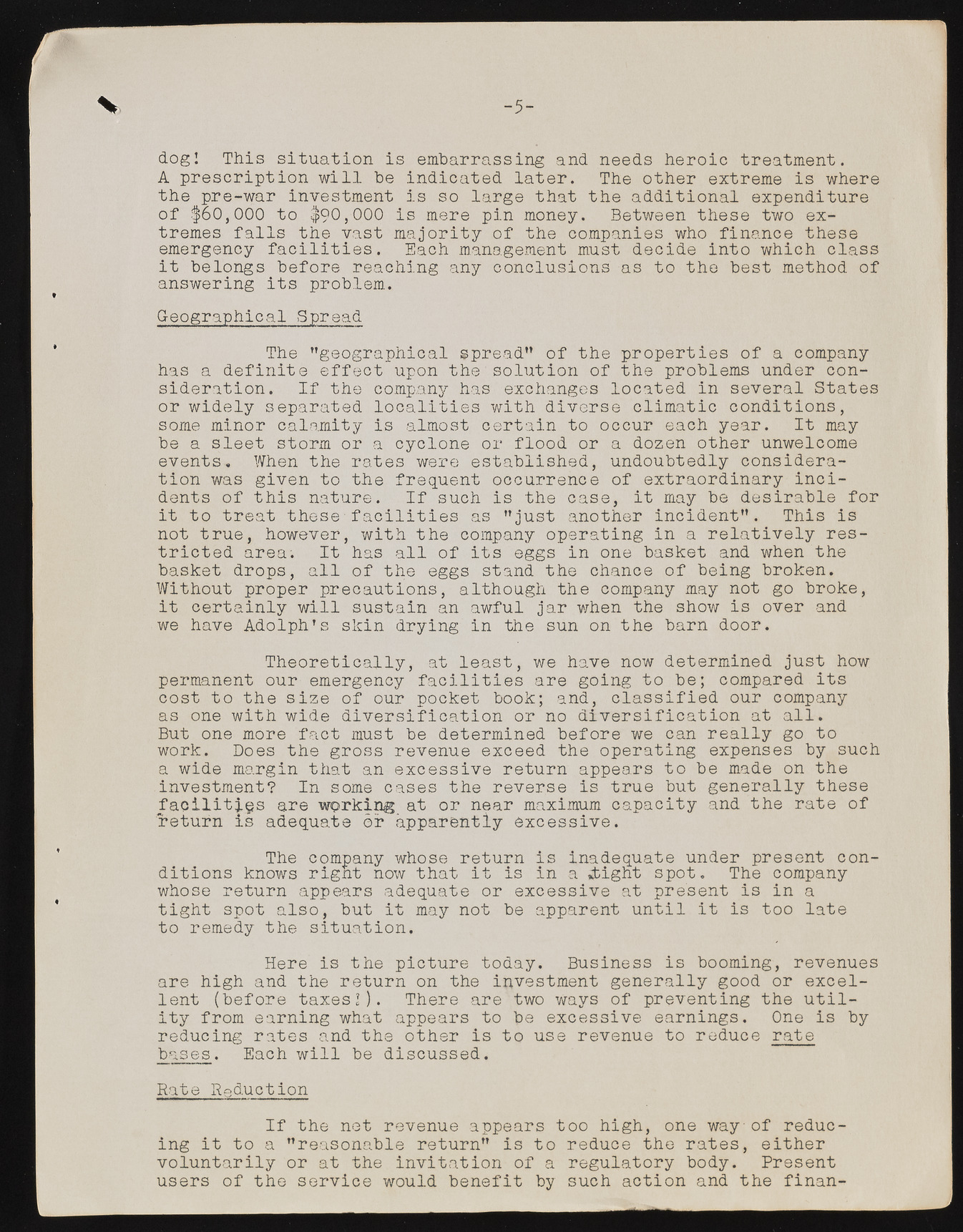Copyright & Fair-use Agreement
UNLV Special Collections provides copies of materials to facilitate private study, scholarship, or research. Material not in the public domain may be used according to fair use of copyrighted materials as defined by copyright law. Please cite us.
Please note that UNLV may not own the copyright to these materials and cannot provide permission to publish or distribute materials when UNLV is not the copyright holder. The user is solely responsible for determining the copyright status of materials and obtaining permission to use material from the copyright holder and for determining whether any permissions relating to any other rights are necessary for the intended use, and for obtaining all required permissions beyond that allowed by fair use.
Read more about our reproduction and use policy.
I agree.Information
Digital ID
Permalink
Details
More Info
Rights
Digital Provenance
Publisher
Transcription
V -5- dog! This situation is embarrassing and needs heroic treatment. A prescription will be indicated later. The other extreme is where the pre-war investment is so large that the additional expenditure of .$60,000 to $90,000 is mere pin money. Between these two extremes falls the vast majority of the companies who finance these emergency facilities. Each management must decide into which class it belongs before reaching any conclusions as to the best method of answering its problem. Geographical Spread The "geographical spread" of the properties of a company has a definite effect upon the1solution of the problems under consideration. If the company has exchanges located in several States or widely separated localities with diverse climatic conditions, some minor calamity is almost certain to occur each year. It may be a sleet storm or a cyclone or flood or a dozen other unwelcome events. When the rates were established, undoubtedly consideration was given to the frequent occurrence of extraordinary incidents of this nature. If such is the case, it may be desirable for it to treat these facilities as "just another incident". This is not true, however, with the company operating in a relatively restricted area. It has all of its eggs in one basket and when the basket drops, all of the eggs stand the chance of being broken. Without proper precautions, although the company may not go broke, it certainly will sustain an awful jar when the show is over and we have Adolph’s skin drying in the sun on the barn door. Theoretically, at least, we have now determined just how permanent our emergency facilities are going to be; compared its cost to the size of our pocket book; and, classified our company as one with wide diversification or no diversification at all. But one more fact must be determined before we can really go to work. Does the gross revenue exceed the operating expenses by such a wide margin that an excessive return appears to be made on the investment? In some cases the reverse is true but generally these facilities are working at or near maximum capacity and the rate of return is adequate or apparently excessive. The company whose return is inadequate under present conditions knows right now that it is in a itight spot. The company whose return appears adequate or excessive at present is in a tight spot also, but it may not be apparent until it is too late to remedy the situation. Here is the picture today. Business is booming, revenues are high and the return on the investment generally good or excellent (before taxes!). There are two ways of preventing the utility from earning what appears to be excessive earnings. One is by reducing rates and the other is to use revenue to reduce rate bases. Each will be discussed. Rate Reduction If the net revenue appears too high, one way of reducing it to a "reasonable return" is to reduce the rates, either voluntarily or at the invitation of a regulatory body. Present users of the service would benefit by such action and the finan

